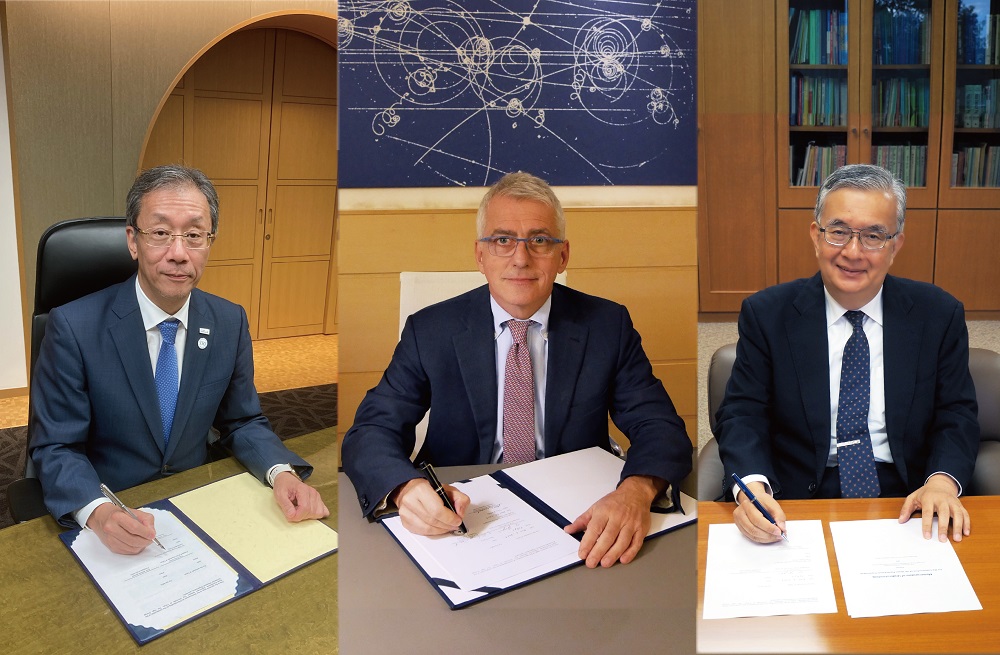
The Italian National Institute for Nuclear Physics (INFN), High Energy Accelerator Research Organization (KEK) and The University of Tokyo (UTokyo) signed a memorandum of understanding (MoU), which aims to promote the Hyper-Kamiokande project. The project consists of the Hyper-Kamiokande detector being constructed at Kamioka, Hida City and the high intensity neutrino beam from Japan Proton Accelerator Research Complex (J-PARC) located in Tokai Village, Ibaraki Prefecture, 295km away from the HK detector. The project has been under preparation to start operation in 2027. Twenty-two countries showed their interest in participating in this Japan-led project and Italy is the fourth nation for KEK to sign the MoU following Poland, Spain and Canada.
UTokyo President Teruo Fujii, KEK Director General Masanori Yamauchi and President of the INFN Antonio Zoccoli exchanged signatures by post by the end of November 2023.
According to the MoU, the Italian participation in Hyper-Kamiokande has been organized by several groups: the INFN divisions of Bari, Naples, Padua, Pisa and Roma, the INFN Legnaro National Laboratories, the Polytechnic University of Bari, the University of Naples Federico II, the University of Campania “Luigi Vanvitelli”, the University of Salerno, the University of Padua, the University of Pisa and the University of Rome Sapienza. The major expected contributions of Italy are the development, production and installation of new photosensor modules (multi-PMT) and of the front-end digitizer boards for the 20-inch photomultipliers.
The Hyper-Kamiokande project is planned to have a main detector with fiducial mass eight times greater than its predecessor detector, Super-Kamiokande, and it is equipped with newly-developed high-sensitivity photosensors, and intense neutrino beam produced at J-PARC upgraded up to 1.3MW. The aim of the project is to elucidate the Grand Unified Theory and the history of the evolution of the universe through an investigation of proton decay and CP violation (the asymmetry between neutrinos and antineutrinos), together with the observation of neutrinos from supernova explosions. The budget of the construction was approved by the Japanese Diet in February 2020, which marked the official start of the project. The construction has gotten into full swing with the main cavern excavation which started in November 2022 and successful completion of the main dome section for the experimental site in October 2023.
Related Article
2023/07/03 The Seventh Meeting of the Hyper-Kamiokande Experiment Financial Forum (HKFF) Representatives of 15 countries participate in discussing the current status and new funding needed to start the experiment
2022/09/01 The Ministry of Science and Innovation of the Kingdom of Spain, KEK and UTokyo Sign MoU to Promote Hyper-Kamiokande Project
2022/02/14 NCBJ in Poland, KEK and UTokyo Sign MoU to Promote Hyper-Kamiokande Project
